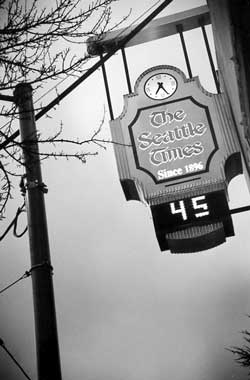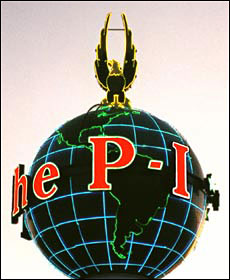THE JOINT OPERATING AGREEMENT (JOA) between The Seattle Times and the Seattle Post-Intelligencer, like about a dozen other similar arrangements, is exempt from federal antitrust laws under the Newspaper Preservation Act of 1970. The act’s stated purpose is to serve the public’s interest in preserving two editorial voices in cities where a weaker newspaper otherwise would fail. Under the law, two papers are allowed to save money by merging their business functions while continuing to compete with separate newsrooms.
In Seattle, the Times handles all the advertising, marketing, production, and distribution of both the Times and the P-I. Both papers are printed, for example, at a Times-owned printing plant in Bothell. But the P-I has its own separate newsroom, on Elliott Avenue West on the waterfront, while the Times newsroom and business offices are in the South Lake Union neighborhood, on Fairview Avenue North.
After the Times covers the so-called “agency” expenses related to producing both papers, the remaining revenue is divided between the two companies, with 60 percent going to the locally controlled Seattle Times Co. and 40 percent going to P-I owner Hearst Communications.
Seattle’s JOA was signed in 1981, with joint operations starting in 1983. It was revised in 1999, and the Times was allowed to switch from afternoon to morning publication, competing side by side with the P-I.
Many JOAs have been phased out over the years as economies of scale were expended, with the weaker of the two JOA papers shutting down. In some cases, the former owner of a closed paper continues to collect a percentage of profits from the one still publishing.








